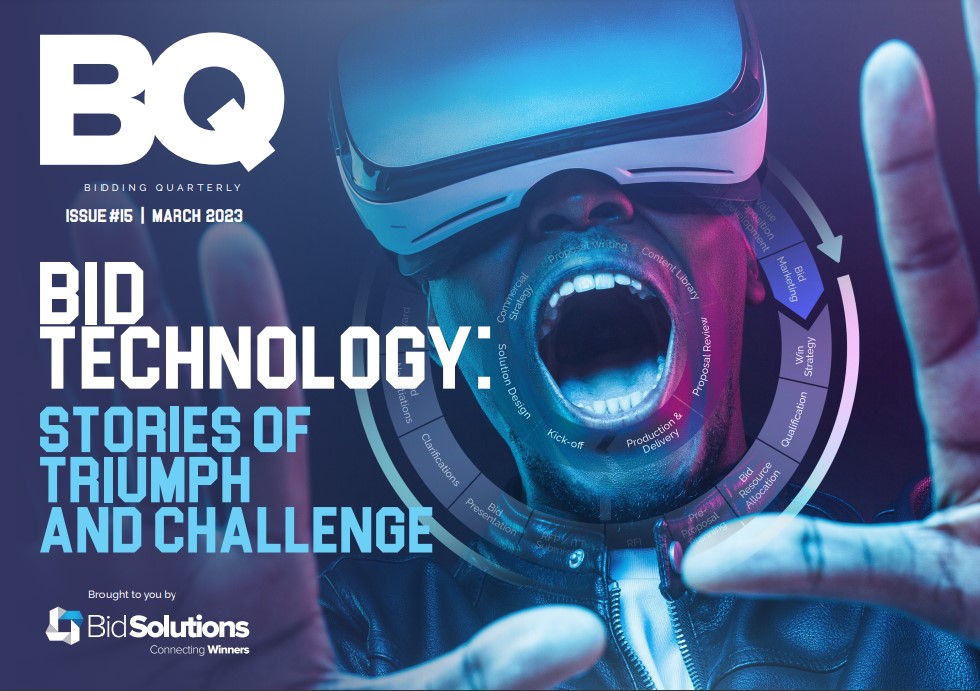
Please don’t get me wrong – I do like technology. I enjoy all the things it can do to make our daily lives more interesting. However, in my experience it can get in the way of creating an effective bid!
First, I must point out that I am “old school”. In a nutshell, this means I believe everything before 2000 is much better than anything connected with the technology that followed. “No, no!” you say. “What about internet everywhere and smartphones?” “How about AI and ChatGPT?” My response is they can all do interesting things but they actually get in the way of winning bids!
I accept simple tools such as word processors and spellcheckers are useful. I no longer own a manual typewriter. But I think much of the technology which tries to be cleverer or tries to encompass the entire bid space is counterproductive. I have several reasons for this and I think is the most obvious is security.
Security underpins many executives’ inability to sleep at night, particularly when thinking about the bidding environment. The bid team holds the keys to the company’s future. If any competitor gets hold of the information they have, the bid will probably be lost. This will have a direct negative impact upon the company, its individuals and departments, its market standing and its ability to prosper in the future. Executives tremble at the mere thought.
So “security” is imposed. Productive days are lost in security awareness training. Huge expense is put into physical and computer security systems which involve more training. Nothing can be done quickly; everything has to follow strict security processes. Forgotten or forced change passwords result in more lost time. All this reduces everyone’s level of contribution and bid quality is diminished.
In the good old days, we may have had some (appropriately simple) security training. Then we would run the bid from its own room with directly connected computers and printers. Key information was on wall charts. We didn’t need internet, VPNs, Wi-Fi printers. No one could get into the system without coming into the room. There was no disruptive security. Perhaps this wasn’t perfect – but we could add someone to the bid team at a moment’s notice. Plus, the bid team could actually talk to each other!
Next is database tools. It is great to be able to see other bid responses which cover the same topic area before we start witing our response to our bid…or is it? In my experience the opportunities to cut and paste large chunks of bid from old to new are infrequent. When it happens, the bid’s focus becomes diluted. It just doesn’t directly connect to the client’s specific needs or situation. It uses text developed to meet a different need. I believe the best bid responses are written from scratch. They must be focussed entirely on the specific bid and customer requirements at that moment.
So why do organisations spend so much time and resources creating large databases of bid information? These must be maintained and updated. Users must be trained to find the information and, if it is up to date, extract it. All this to create a second-rate response. To my mind, using the money and resources to provide more bid writer capacity would achieve a better win rate. To reinforce my point, I have known large organisations who have bought such bid database systems then never put them to use. I say buy a bid writer instead!
Then there are tools which create a closed computer environment for all bid writers to work within. They seek to constrain the formatting and layout to a restricted, common style. When the final document is put together, formatting conflicts do not happen. The bid manager can peek at progress in real time and intervene earlier if things are not right.
In my experience, the bid team members do not like this. After all the training on how to use the system, they go away and do what they have always done. Then they cut and paste from their “usual” word processing system into the new one. Third parties are not easily included in the system and in any case, will generate their input separately. Once again, all this system training and management removes effort from the core issue – creating the bid.
Finally, there are smartphones. These evil and invidious devices are too small to see what a page of bid text really looks like. Bid text generated on a smartphone is always poor quality. Their main impact is diverting attention away from the bid. They steal focus with their various “alerts”, to which the owner must respond immediately. Inevitably, the bid suffers.
My approach to getting a winning bid is clear. Keep it simple. Let the team use the software tools they are used to (but not tiny screens). Dodge anything which requires management and training beyond the basic bid processes – but accept you cannot avoid it all. Write the response from scratch, directly against the specific question and client. Allow time to integrate different inputs at the end of the bid. Then, review the final bid as a whole. Most of all, weigh all the “advantages” of technology very carefully before you allow any focus to be taken away from the core bid response.
This article was written by Andy Haigh.
Andy is an expert in bidding and tendering, specialising in competitive formal bids into EU Public Sector organisations. He is an authority on EU procurement legislation and can bring all these capabilities together to initiate and drive major complex bids through to a successful completion

